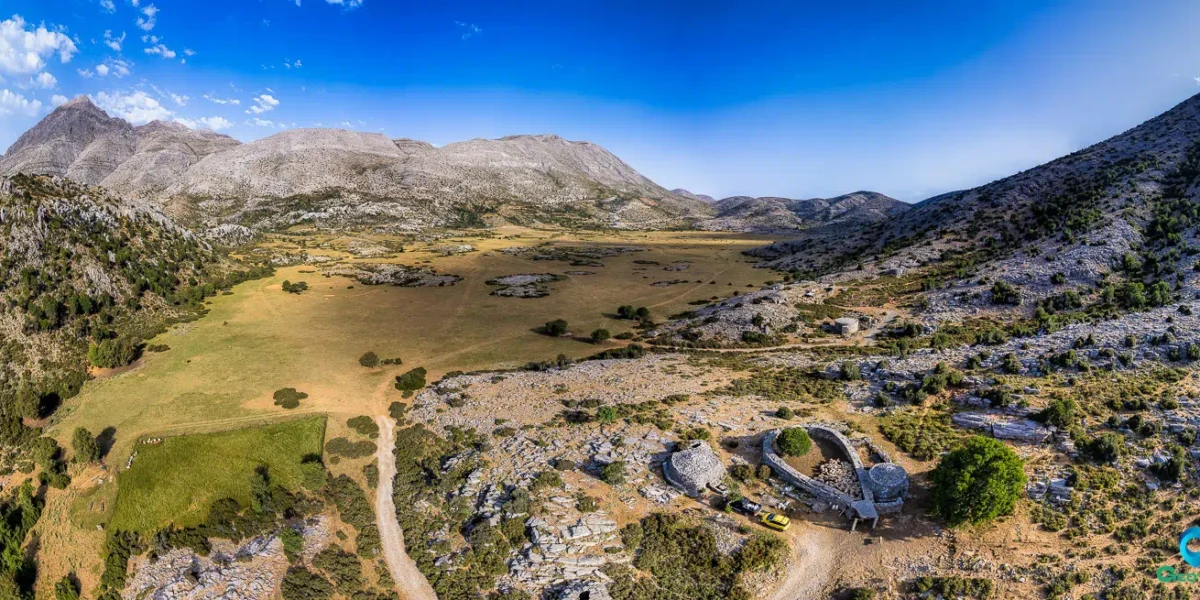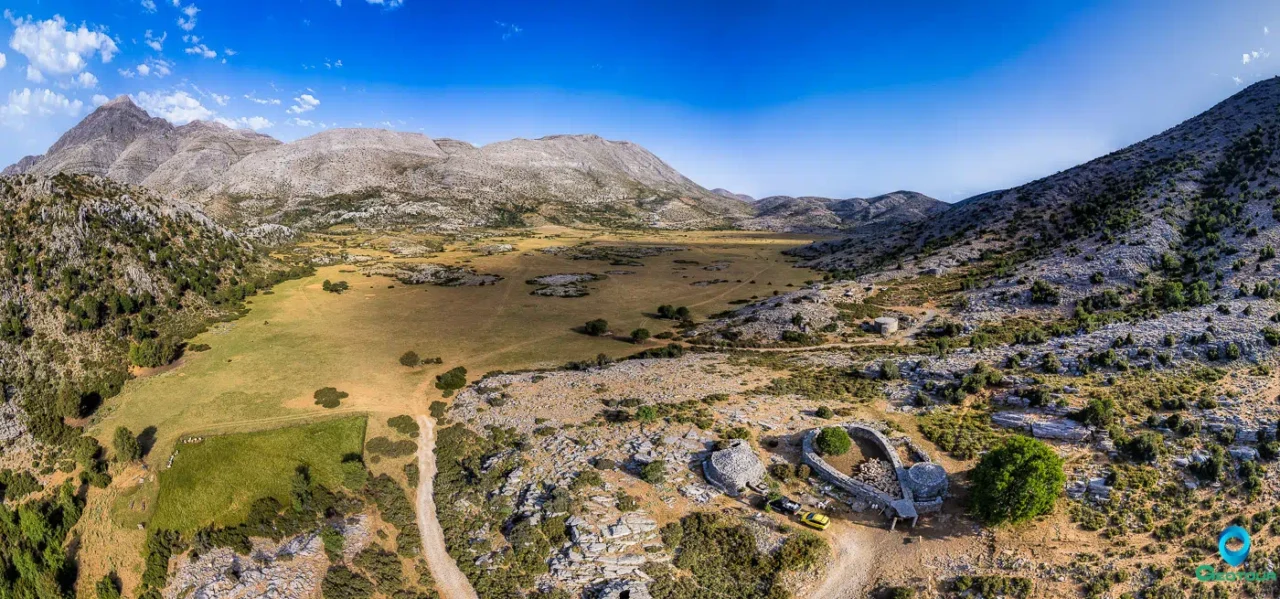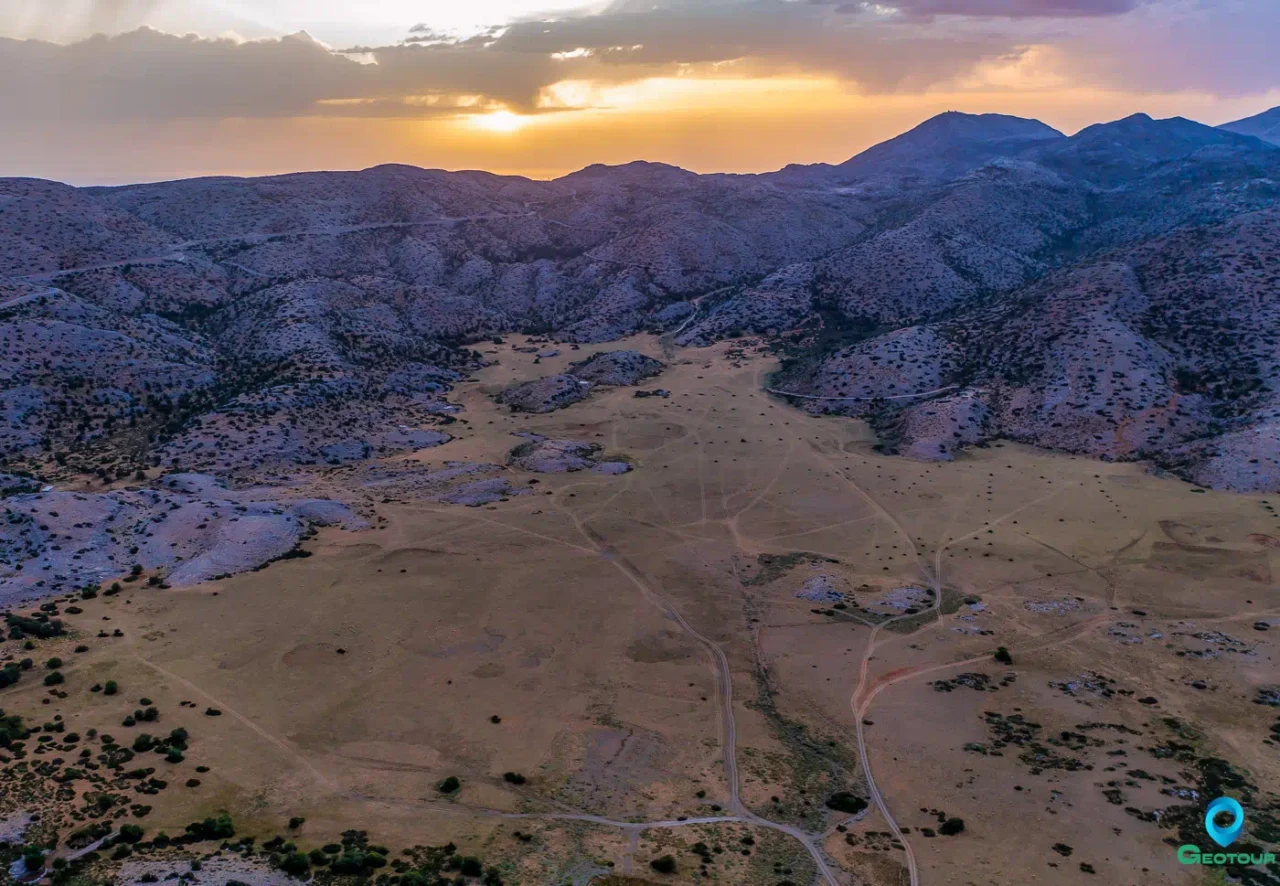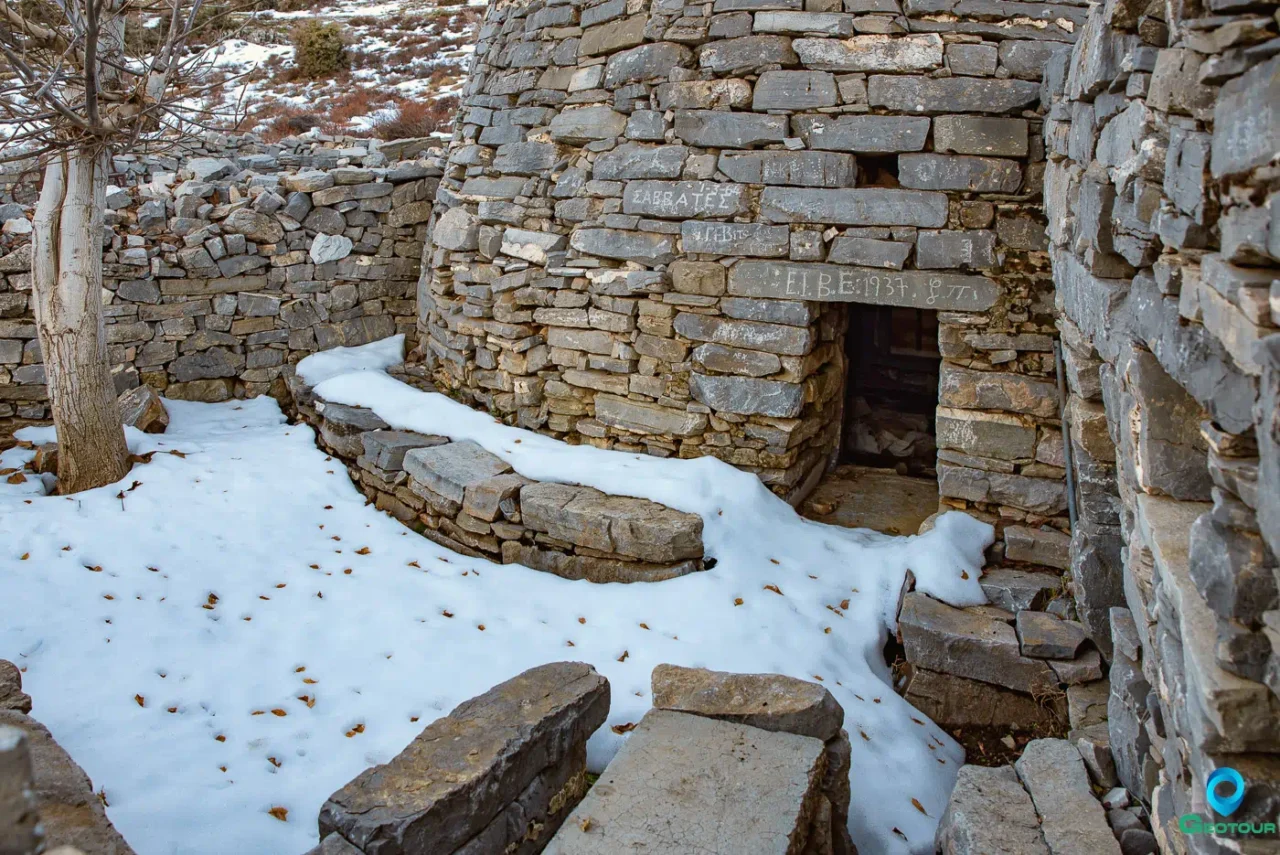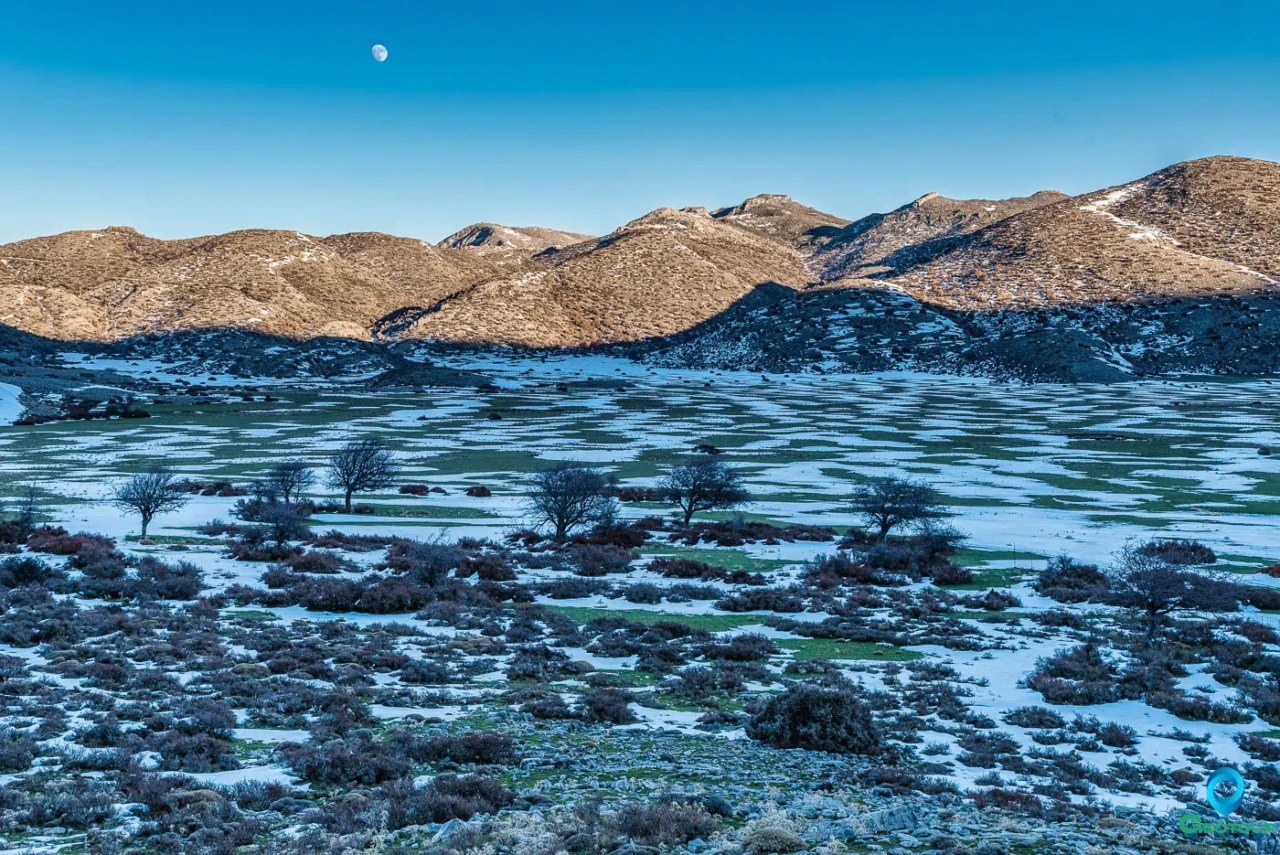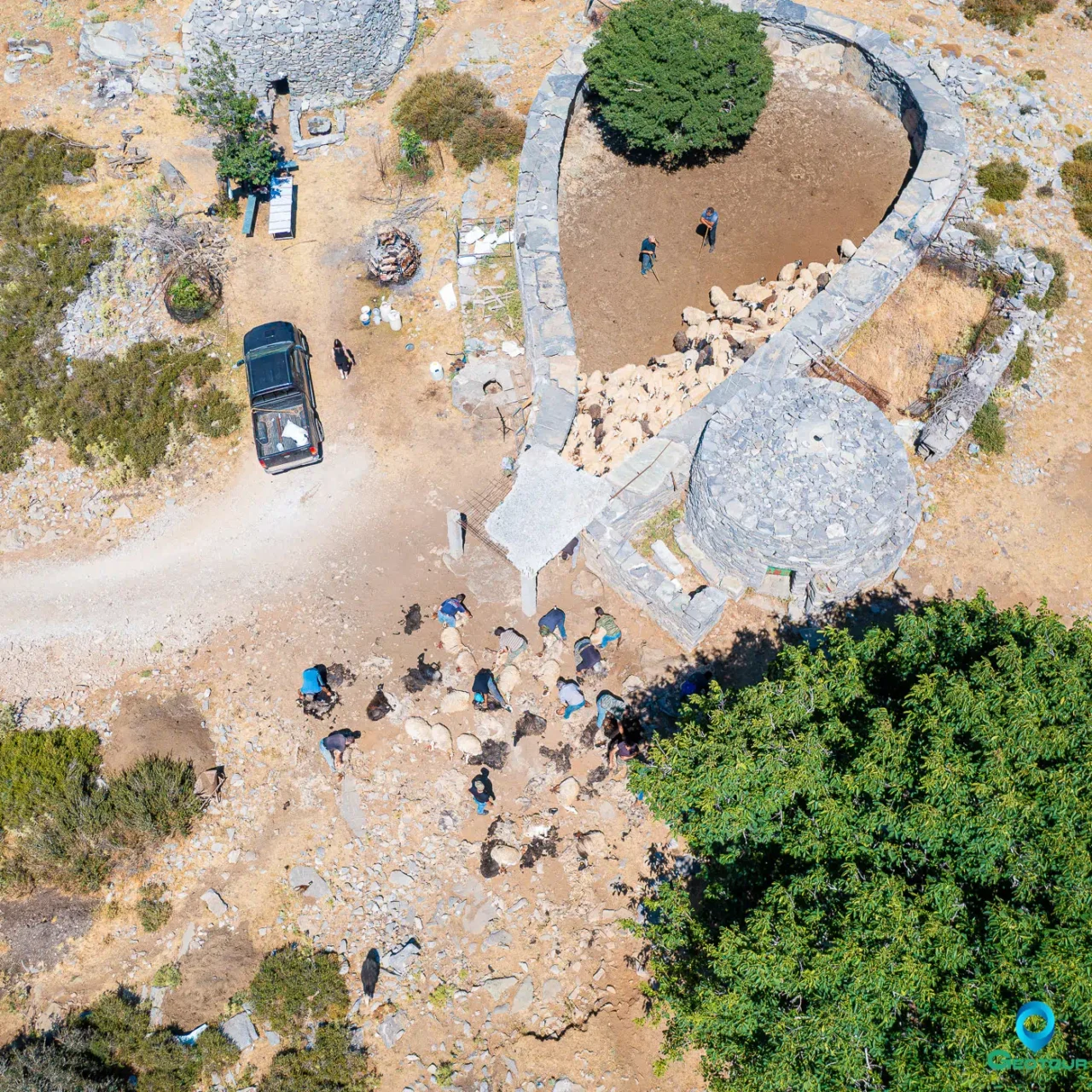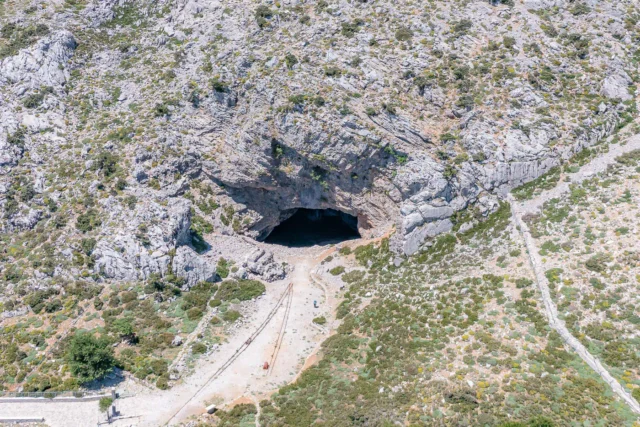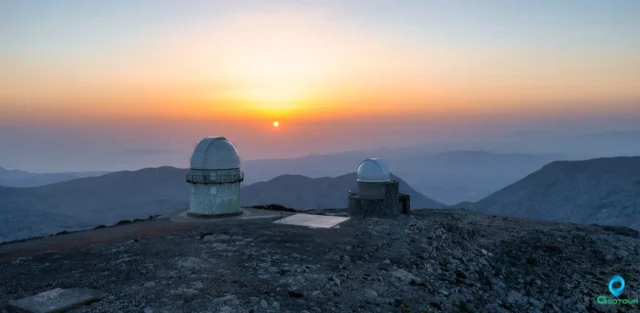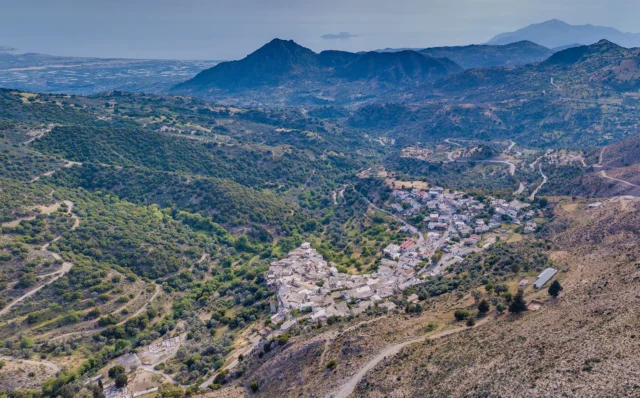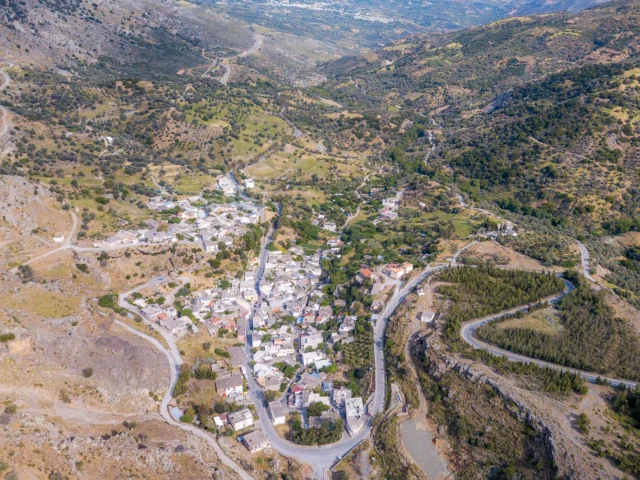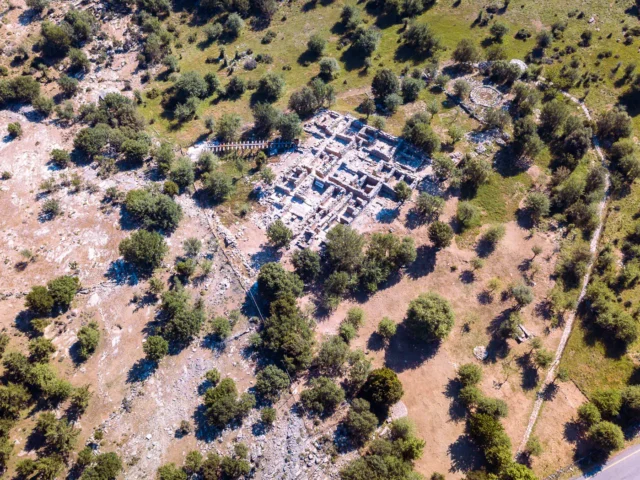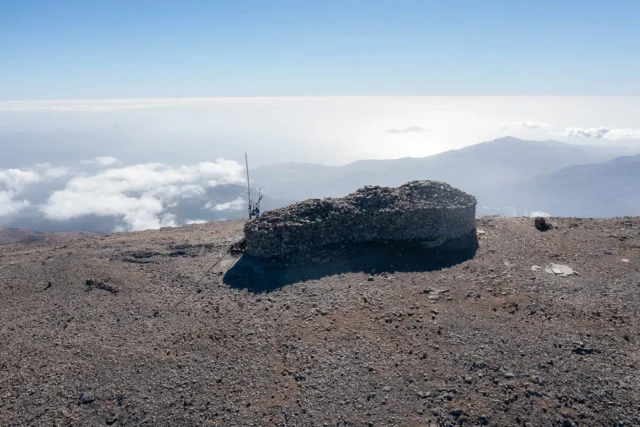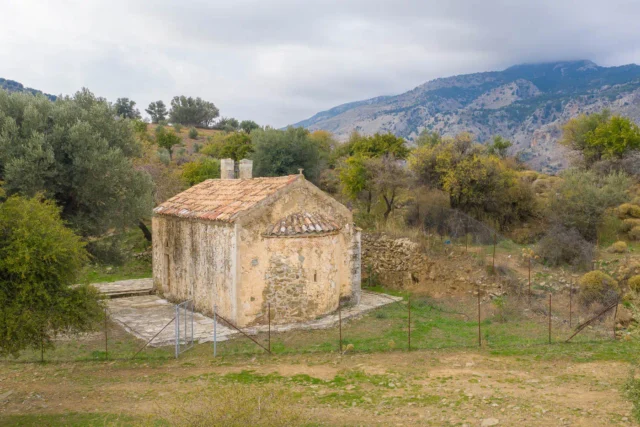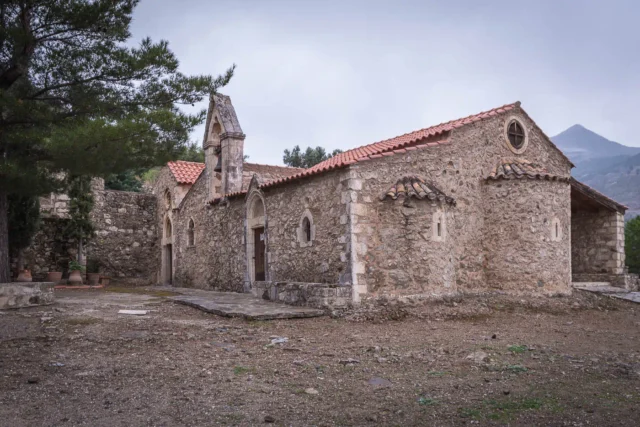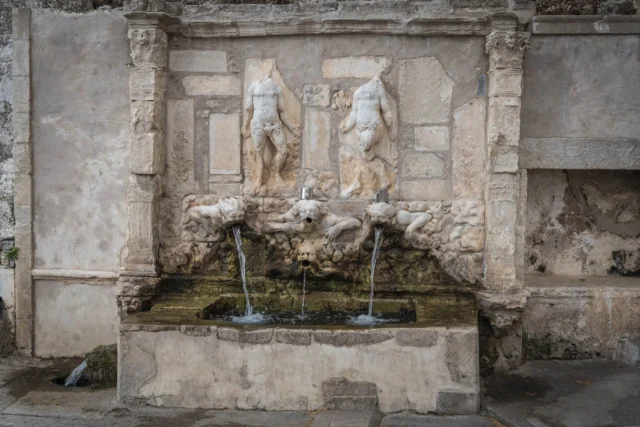The Nida Plateau is a large plain in the mountains of central Crete, located between the island’s highest peaks. At an average altitude of 1,400 meters, this area is a key part of the Psiloritis UNESCO Global Geopark. The Nida Plateau is a place of geological, mythological, and historical importance.
The name Nida comes from the ancient Greek phrase “stin Ida,” which means “in Ida” or “on Ida.” This refers to the plateau’s location within Mount Ida, known today as the Psiloritis massif.
A Land Forged by Gods and Geology
The creation of the Nida Plateau is a dramatic story of immense natural forces. Millions of years ago, the collision of the African and Eurasian tectonic plates pushed the mountains of Crete up from the depths of the ancient Tethys Ocean. A massive geological fracture, the Idaion Fault, then caused a huge block of land to sink, forming a contained basin.
Over countless millennia, rain and melting snow collected in this basin. The water, being naturally slightly acidic, slowly dissolved the limestone rock in a process called karstification. This patient, persistent work of water carved out the expansive, flat-floored plain, known as a polje, that we see today.
The plateau plays a vital role in the island’s hydrology. With no rivers or lakes on its surface, water vanishes into sinkholes, feeding a complex underground network of caves and rivers. This hidden plumbing system makes Nida a critical water tower for central Crete, supplying major springs and the fertile Messara Plain to the south.
The Cave of Zeus: A Cradle of Mythology
Perched on the western rim of the plateau is the Ideon Andron, or Idaean Cave, one of the most important mythological and archaeological sites in Crete. According to legend, this is the cave where the goddess Rhea hid her infant son, Zeus, to protect him from his father, Cronus. Here, the baby was nursed by the mythical goat Amalthea, while the warrior Kouretes clashed their shields at the entrance to drown out his cries.
Excavations have proven the cave’s immense importance, revealing it was a major religious sanctuary for over 3,000 years. Pilgrims from across the Mediterranean brought incredible treasures as offerings, including ornate bronze shields, gold, silver, and ivory, turning this remote mountain cave into an international center of worship.
A Resilient Ecosystem
The environment at Nida is one of extremes, from harsh, snowy winters to hot, windswept summers. This has fostered a unique ecosystem of specially adapted plants and animals.
The plateau floor is covered in a dense green mat of Polygonum idaeum, a hardy local plant. In early spring, this carpet is brought to life by a spectacular bloom of purple snow crocuses. The surrounding slopes are dotted with thorny, cushion-shaped shrubs and fragrant herbs like Cretan sage and thyme.
While difficult to spot, the area is home to the elusive Cretan wildcat and majestic birds of prey, including the endangered Bearded Vulture. Its caves and springs also shelter tiny, endemic creatures found nowhere else on Earth, a testament to evolution in this isolated environment.
The Shepherd’s Life: A Culture Carved in Stone
For thousands of years, the surface of Nida has belonged to the shepherds. Their pastoral way of life has profoundly shaped both the landscape and the local culture. The most iconic symbol of this heritage is the mitato, the traditional stone shepherd’s hut.
These ingenious circular buildings are constructed from local, undressed stones without any mortar. Their corbelled dome roofs are strong enough to withstand the weight of heavy snow and provide superb insulation. Historically, the mitato was a high-altitude creamery where shepherds would make Crete’s famous cheeses, like graviera and myzithra, preserving their flock’s milk into a valuable product.
While much cheese production has moved to modern facilities, the mitato remains a powerful symbol of Cretan identity. Today, some shepherds share their traditions by opening their mitata to visitors, offering an authentic glimpse into the timeless pastoral culture of the mountains.
Visiting the Nida Plateau
Reaching Nida is an adventure in itself. The main route is a paved road from the historic village of Anogia, a scenic hour-long drive that climbs into the heart of the Psiloritis range. For the more adventurous with a 4×4 vehicle, rugged tracks from the south offer a challenging journey through the magnificent Rouvas oak forest with panoramic views of the Messara Plain.
The plateau is a major hub for hikers. The most famous trek is the ascent to Timios Stavros, the highest peak of Psiloritis, which rewards climbers with an unforgettable 360-degree view of Crete.
Nida Plateau at a Glance
- Location: In the center of the Psiloritis mountain range in Crete, at an average altitude of 1,400 meters.
- Geology: A large, flat-floored depression (polje) formed by tectonic faulting and karst processes.
- Mythology: Home to the Ideon Andron, the mythical cave where the Greek god Zeus was raised.
- Culture: A historic center of Cretan pastoralism, known for its iconic stone shepherd’s huts (mitata).
- Status: A core feature of the Psiloritis UNESCO Global Geopark, recognized for its unique natural and cultural heritage.
- Activities: A popular destination for hiking, mountaineering, and exploring traditional Cretan culture and history.

